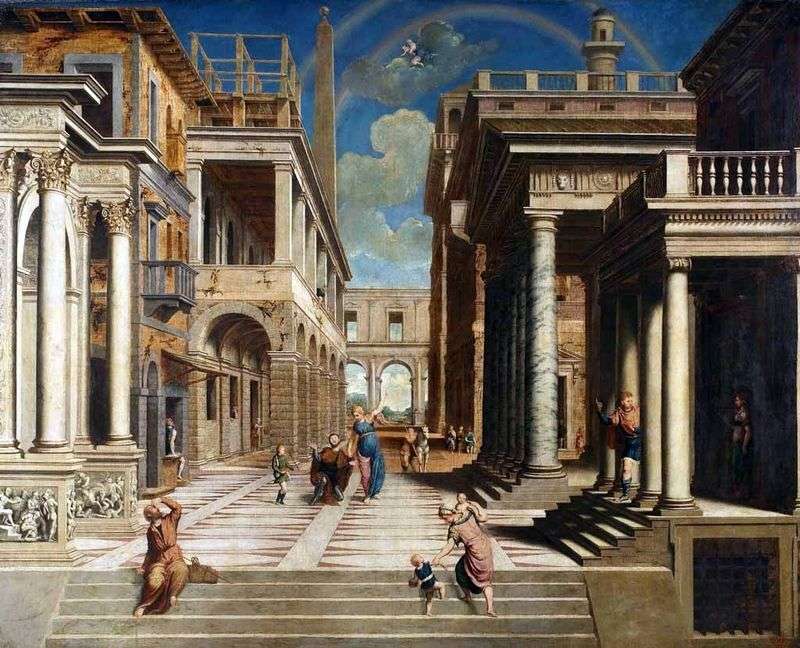
The painting is an early example of a compiled architectural landscape in Italian art. According to Paris Bordone himself, he painted “five architectural warrants in perspective.”
The heroes of the legend about the prophecy of the Tiburtian Sibyl in this ideal space are only staff. The kneeling Augustus is depicted in the center of the composition next to the Sibyl, pointing to the sky where the Madonna and the Child are shown in the clouds. To the left of Augustus is a servant with an imperial staff in his hand.
However, the main hero here is the flawlessly built space of the ancient city. The artist demonstrates an excellent mastery of direct perspective and knowledge of the order system of ancient architecture. By placing secondary characters on the stairs and in the porticoes of the building, Bordon creates an almost theatrical mise-en-scene. Reliefs on the basement of the building on the left side of the picture glorify the military victories of Emperor Augustus.
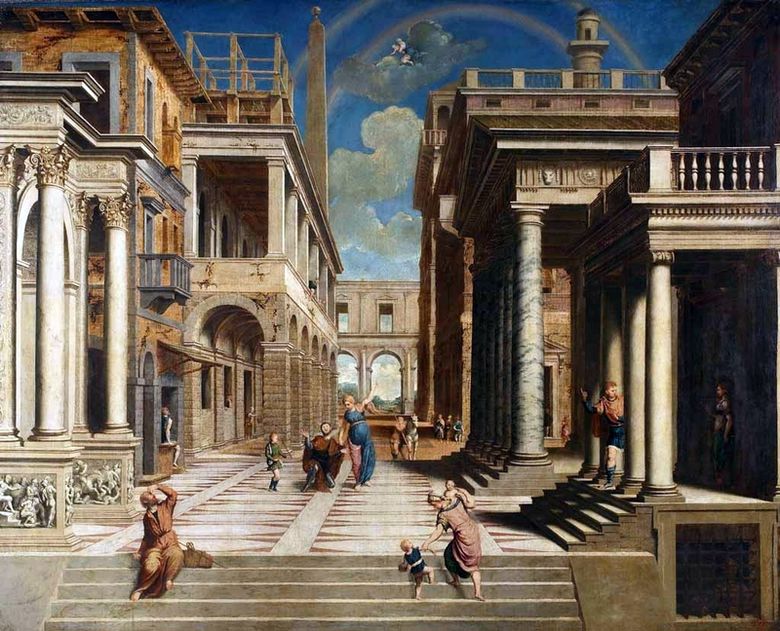 L’apparition des sibylles à l’empereur Auguste – Paris Bordone
L’apparition des sibylles à l’empereur Auguste – Paris Bordone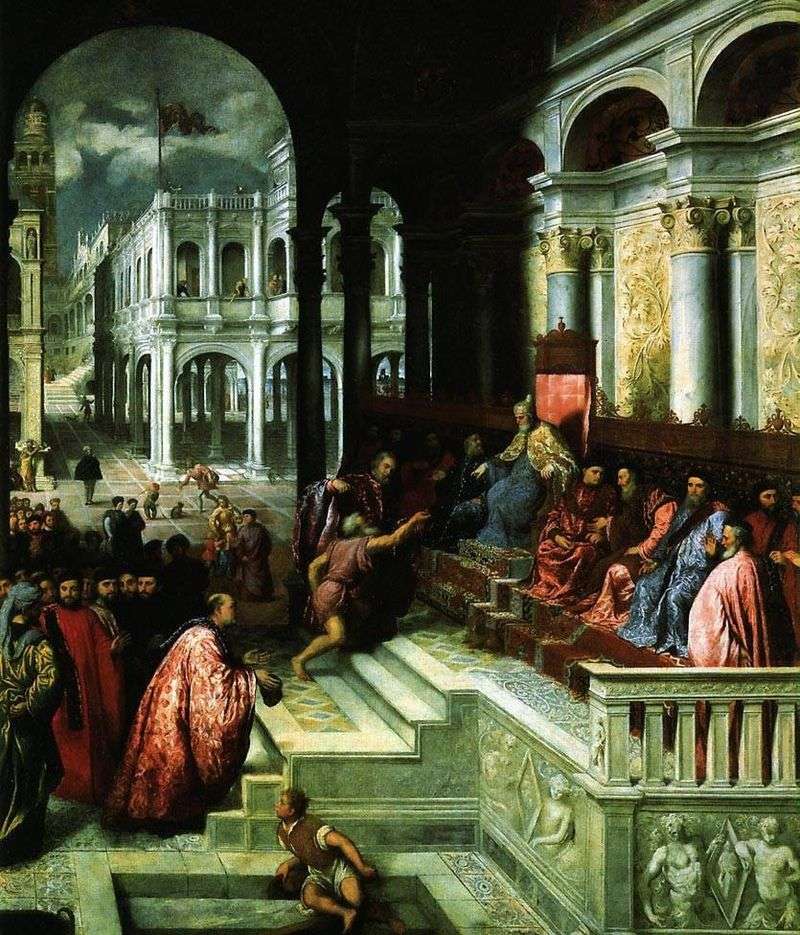 Delivery of the Donjee ring by Paris Bordone
Delivery of the Donjee ring by Paris Bordone Maecenas presents emperor Augustus with free art by Giovanni Battista Tiepolo
Maecenas presents emperor Augustus with free art by Giovanni Battista Tiepolo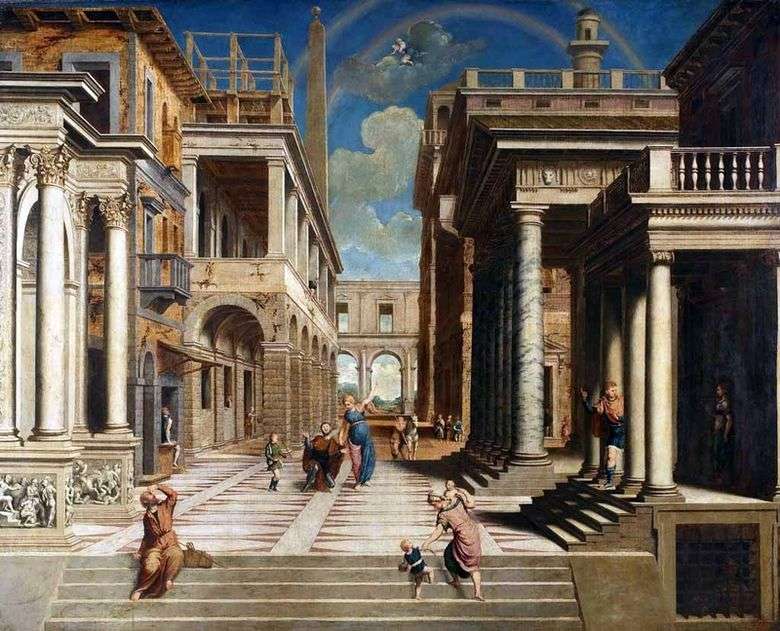 Aparición de Sybil al emperador Augusto – Paris Bordone
Aparición de Sybil al emperador Augusto – Paris Bordone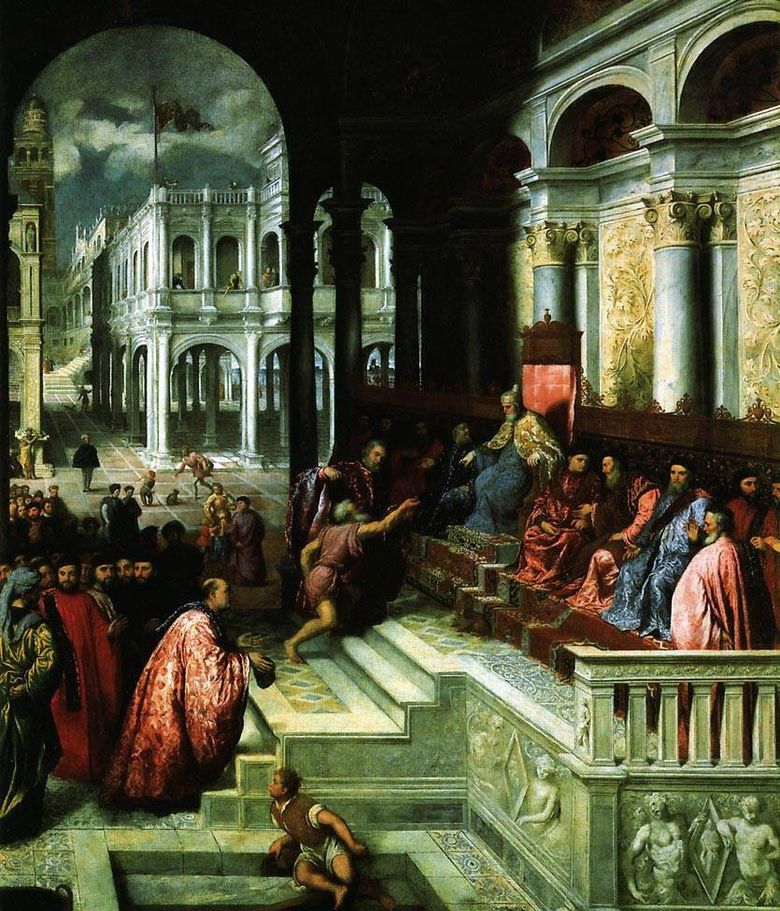 Présentation de la bague Doge – Paris Bordone
Présentation de la bague Doge – Paris Bordone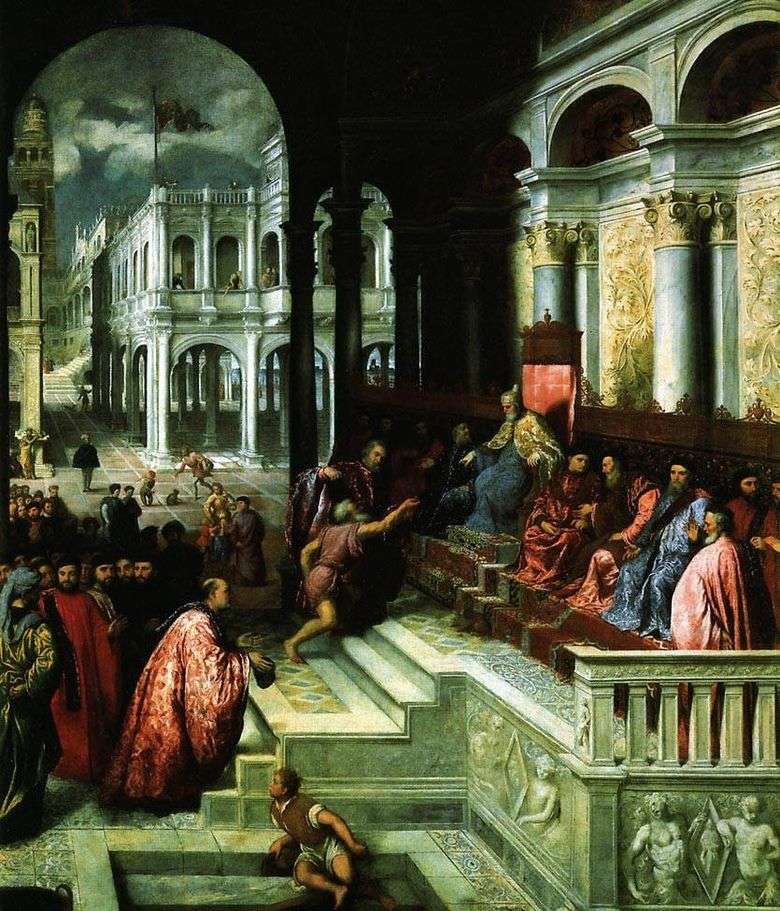 Anillo de entrega de dux – Paris Bordone
Anillo de entrega de dux – Paris Bordone Virgil, reading to the Aeneid Augustus and Octavia by Angelika Kaufman
Virgil, reading to the Aeneid Augustus and Octavia by Angelika Kaufman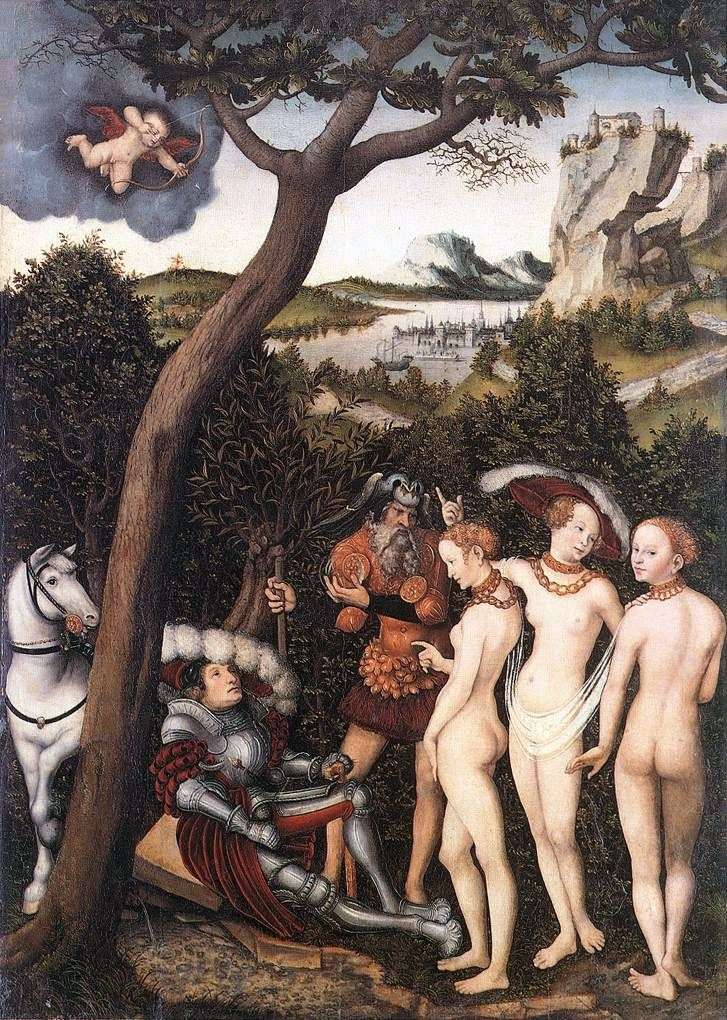 Court of Paris by Lucas Cranach
Court of Paris by Lucas Cranach